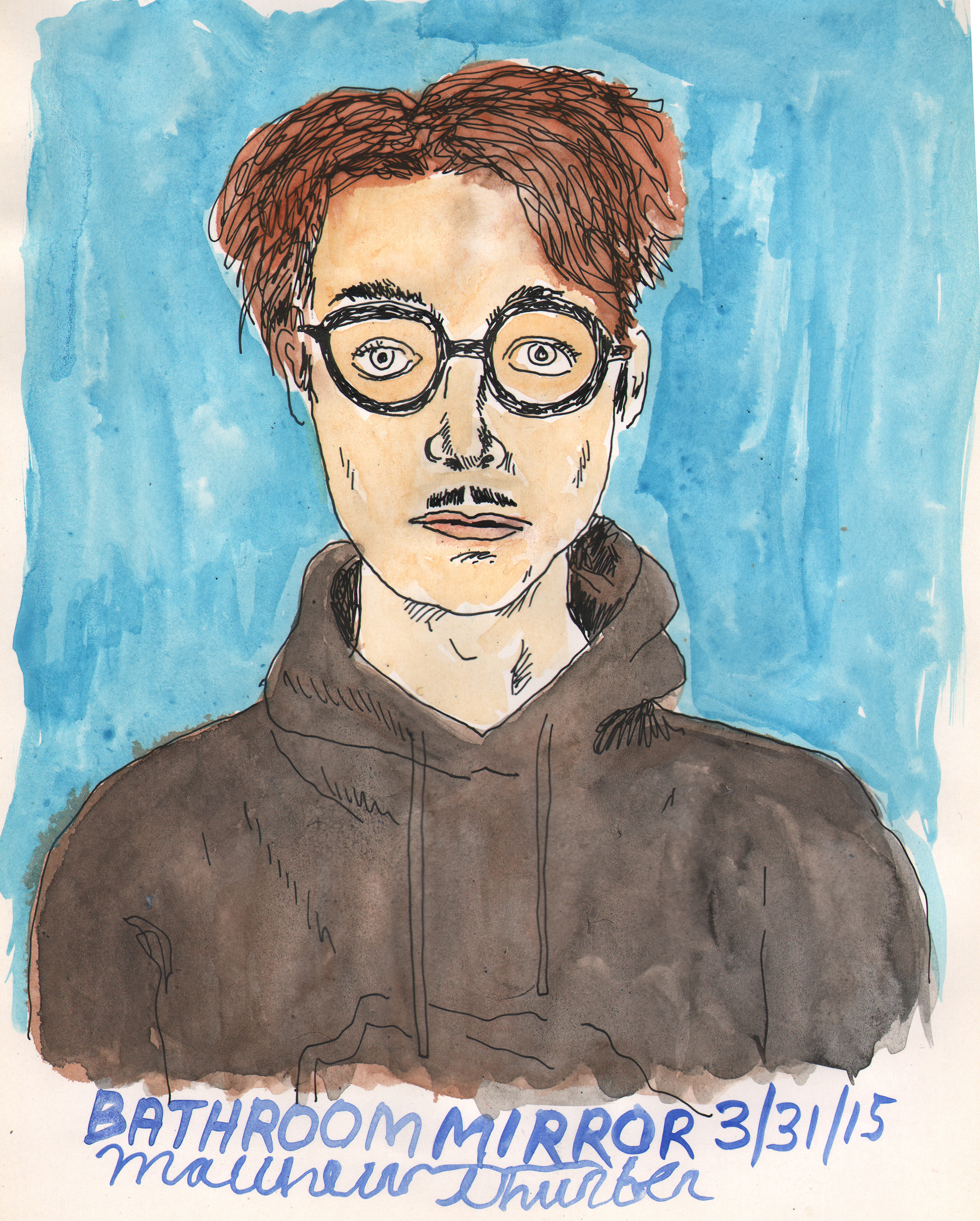
“Listen to yourself. You are right about everything. Be a survivalist, because we’re all going to be fucked soon. Avoid debt, which is a way of trapping you in the system. Learn more skills than anybody, be a bigger nerd and read more at the library, become friends with more weirdos, and put rich people down and make them cry if you can. You don’t need them. Your teachers are poor and confused, so they are your allies. Try to buy a farm with them, and make noise music there with amplified potatoes and drop acid on full moon nights.”
Sundry Methods of Matthew Thurber’s Creative Process:
Throwing a sponge at the wall
Recognizing that his belly button looks really good
Hate-watching interviews with Jeff Koons
Art Comic (Drawn & Quarterly, 2018) keeps a straight face of bemusement with its tongue puncturing through its cheek as it follows a compilation of memories and opinions, ideas and jokes, fantasies and nightmares from multidisciplinary artist Matthew Thurber, author of the graphic novels Infomaniacs (2013) and 1-800-MICE (2011). Based on his time in New York City since the late 1990s, Art Comic is a series of vignetted storylines that cross-weave characters and ideals in the same pseudo-real semi-fictional world of Art, galleries, museums, celebrity, art school dogma, fantasy, and dystopia. Studded with the recognizable names of artists and galleries, stores and bands, the book is a time capsule laced with the clarity of hindsight: what brought us to turn art into a market and why do we all keep buying it? Without the coyness of self-conscious hesitation or shyness, Thurber not only succeeds in making a remarkable collection of visual drawings but has created a mirror in which we can see (and choose where to place) ourselves in the absurdity that exists as the molten core of the art world.
—Shelby Shaw
THE BELIEVER: How would you describe the history of your art career right now?
MATTHEW THURBER: Oh gosh. I went to art school but had interests that were not being addressed there. In my first year out, when I had started to work at the Met as a day job, I threw a sponge loaded with ink at four pieces of paper on the wall. One said music, one said comics, one said film, and one said writing. I think those were the four categories. I was like, “Whatever I throw this at, that’s what I’m gonna work on for the next ten years. I’ll work on each one for ten years.”
BLVR: A Forty-Year Plan.
MT: It was a forty-year plan, exactly, but...
You have reached your article limit
Sign up for a digital subscription and continue reading all new issues, plus our entire archives, for just $1.50/month.
Already a subscriber? Sign in




